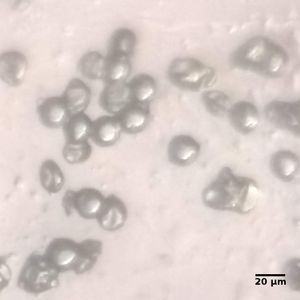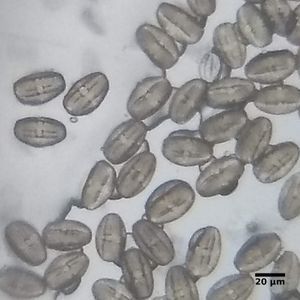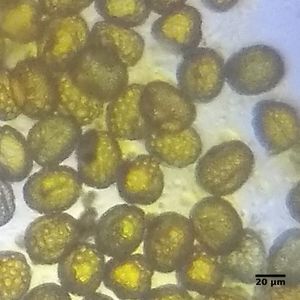Garden city pollen
 Sep 11, 2018 • 11:19 AM UTC
Sep 11, 2018 • 11:19 AM UTC Unknown Location
Unknown Location 140x Magnification
140x Magnification Microorganisms
Microorganisms
varuni
Learn about the author...
21posts
22comments
1locations
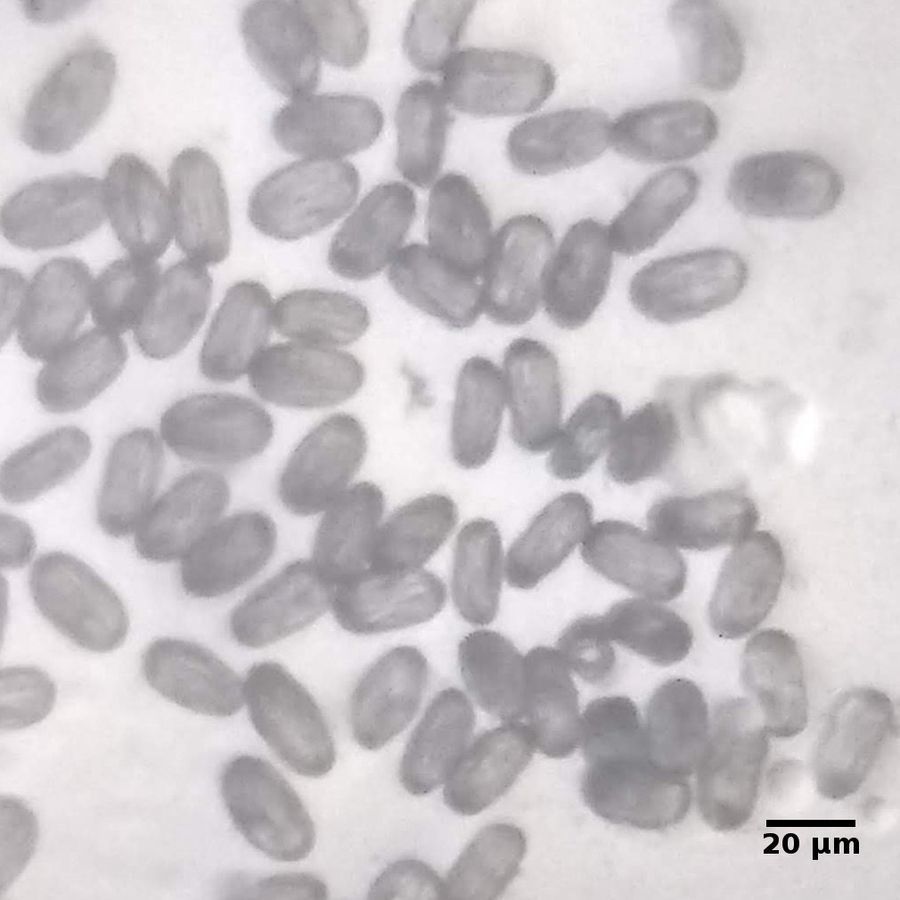
In early June, I was visiting family in Bengaluru . Located at almost the same latitude as hot and salty Chennai , Bengaluru’s elevation of about 900m above sea level, makes it possible to have pretty home gardens and lovely public parks, earning it the description of the Garden City of India. So I took a break from all the pollen from trees to sample pollen from Bengaluru garden plants.
I started with 2 very common flowering garden shrubs:
I started with 2 very common flowering garden shrubs:
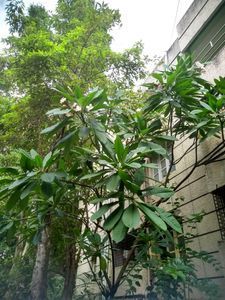

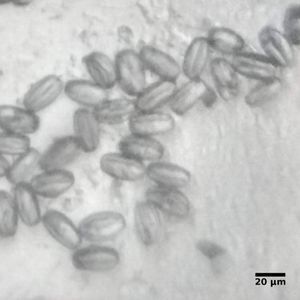
Temple tree ( Plumeria spp.)

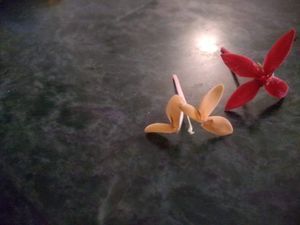

Ixora coccinea
Here’s this strange looking flower called Golden Shrimp and it pollen:
Here’s this strange looking flower called Golden Shrimp and it pollen:
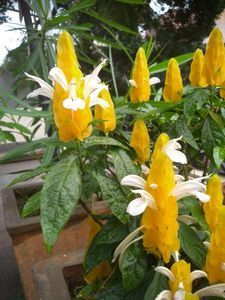
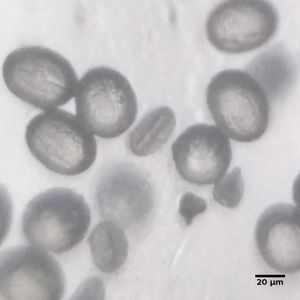
( Pachystachys lutea )
(You can see different sized pollen but I suspect there are in different stages of dessication.)
While the flowers looked very much like the common Kanakambram , it turns out that they may not be that closely related , although they do both come under Acanthaceae . Among other characteristics, this group has petals that are fused into a tube (or “sympetalous corollas”).
There was also this cute purple flower with purple stamens. You can see various stages of dessication of the pollen grains here too.
(You can see different sized pollen but I suspect there are in different stages of dessication.)
While the flowers looked very much like the common Kanakambram , it turns out that they may not be that closely related , although they do both come under Acanthaceae . Among other characteristics, this group has petals that are fused into a tube (or “sympetalous corollas”).
There was also this cute purple flower with purple stamens. You can see various stages of dessication of the pollen grains here too.
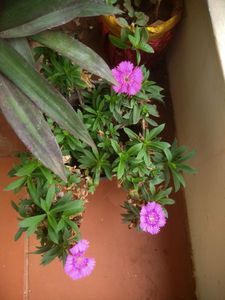
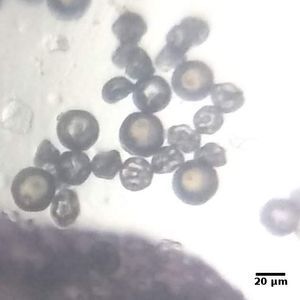
And this plant which has these tiny flower-like things at its leaf node:
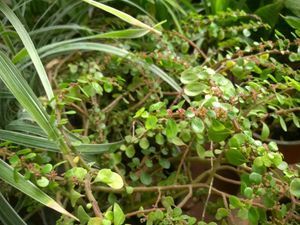
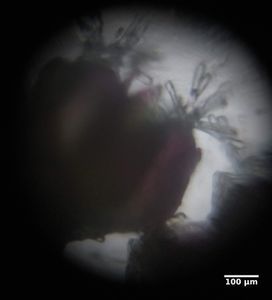
(But I’m not really sure they are flowers. Anyone knows?)
There was also this other strange red flower hanging close by. It’s common name is Hanging Lobster Claw and is a Heliconia
species . Here is the dissected floret and its pollen:
There was also this other strange red flower hanging close by. It’s common name is Hanging Lobster Claw and is a Heliconia
species . Here is the dissected floret and its pollen:
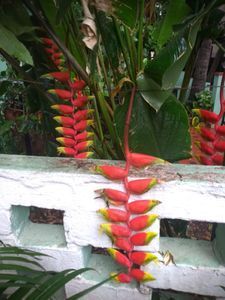
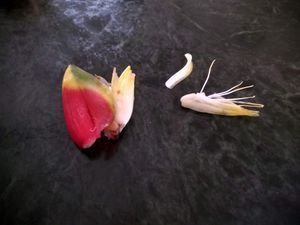
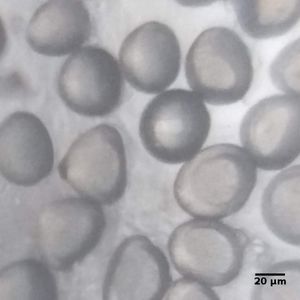
(Some of them almost look triangular, maybe that where the single pore is?)
There was also this pretty plant with spirally arranged l eaves commonly known as the Insulin plant that was flowering:
There was also this pretty plant with spirally arranged l eaves commonly known as the Insulin plant that was flowering:
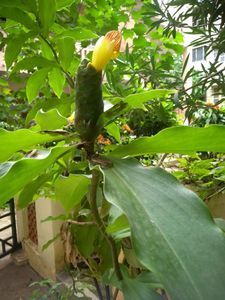
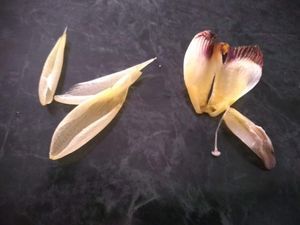
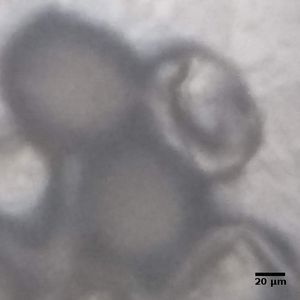
( Chamaecostus cuspidatus )
It’s a monocot (as you maybe able to tell from the venation in the leaves) and closely related to ginger (family: Zingiberaceae ) although they have been given their own family Costaceae now. Much like the other Zingiberanae flowers I looked at ( Banana and the previous Heliconia
species ), the flowers and pollen are sticky.
There were also a few lilies growing near by, so I got some (white and stringy looking) pollen from its anther too:
It’s a monocot (as you maybe able to tell from the venation in the leaves) and closely related to ginger (family: Zingiberaceae ) although they have been given their own family Costaceae now. Much like the other Zingiberanae flowers I looked at ( Banana and the previous Heliconia
species ), the flowers and pollen are sticky.
There were also a few lilies growing near by, so I got some (white and stringy looking) pollen from its anther too:
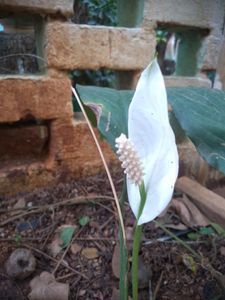
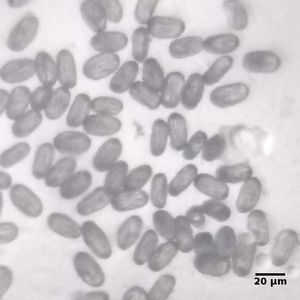
Peace Lily (
Spathiphyllum wallisii
)
While a rose (maybe) is a rose, as I have noted in an earlier post , ‘lily’ is not always a lily. Just like the Easter ‘lily’ (subtribe: Asparagales ), the Peace ‘lily’ is also not botanically a lily — but from another, different, non- Liliales order called Alismatanae . In fact, Alismatanae along with another order, Aranae , make up the aroids, a basal monocot group. Many of these plants are highly specialized to their environment and according to the TOL page: “these features are reductions in form which have confounded attempts at phylogenetic resolution for the group”.
There is a ‘grade’ (group of taxa), Lilioid monocots , which apparently includes our Easter Lily but not this Peace Lily? There seems to have been a recent re-classification of these groups based on molecular phylogenetics which makes it more accurate but also invariably more complicated 🙁 (I’ll try to read more about the different types of ‘lilies’ and write a separate post about it soon.)
PS – Check out a full list of pollen I’ve looked at here:
Pollen list
Spathiphyllum wallisii
)
While a rose (maybe) is a rose, as I have noted in an earlier post , ‘lily’ is not always a lily. Just like the Easter ‘lily’ (subtribe: Asparagales ), the Peace ‘lily’ is also not botanically a lily — but from another, different, non- Liliales order called Alismatanae . In fact, Alismatanae along with another order, Aranae , make up the aroids, a basal monocot group. Many of these plants are highly specialized to their environment and according to the TOL page: “these features are reductions in form which have confounded attempts at phylogenetic resolution for the group”.
There is a ‘grade’ (group of taxa), Lilioid monocots , which apparently includes our Easter Lily but not this Peace Lily? There seems to have been a recent re-classification of these groups based on molecular phylogenetics which makes it more accurate but also invariably more complicated 🙁 (I’ll try to read more about the different types of ‘lilies’ and write a separate post about it soon.)
PS – Check out a full list of pollen I’ve looked at here:
Pollen list
Sign in to commentNobody has commented yet... Share your thoughts with the author and start the discussion!
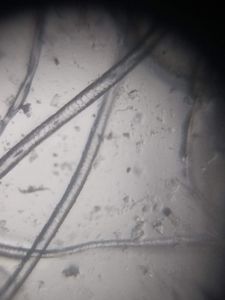
 0 Applause
0 Applause 0 Comments
0 Comments

